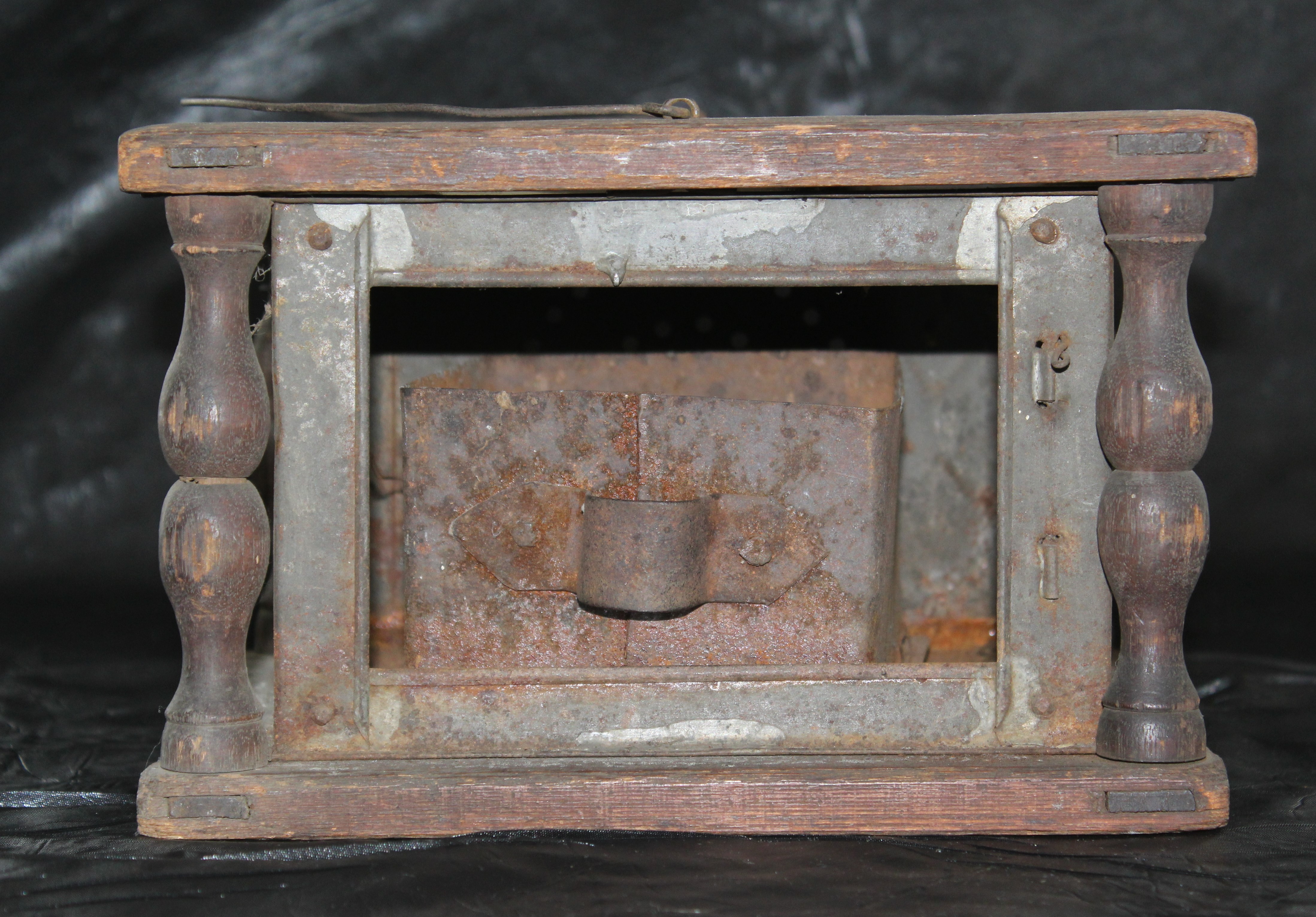Historic Tools of North Castle
Foot Warmers (4)
Catalog Items:
Item T155
| Location: | Panel 11 |
|---|---|
| Length: | 33 cm |
| Width: | 19 cm |
| Height: | 10 cm |
| Weight: | 2413 g |
Smith Tavern has a carriage foot warmer (T155), a rectangle-shaped device that appears to be wrapped in a carpet-lie substance. A center drawer would be filled with hot coal and placed below the feet for long carriage rides in the wintertime. The heat from the coal would seep through the holes in the sides and warm the carpet for passengers.
Reference: Carriage Foot Warmer at Etsy
Item T181/182
| Location: | Panel 11 |
|---|---|
| Length: | 19 cm |
| Width: | 23 cm |
| Height: | 15 cm |
| Weight: | 953 g |
Smith Tavern has two wood and punched-tin foot warmers (T181/182), by unknown makers, probably from the mid-19th century. They are structured with wood frames and turned balustrade-style supports. The punched-tin tops and sides are a simple line pattern.
T181 is missing the door that closed the device, but includes the small tin bucket that would have been filled with hot coals and tucked inside; the punched holes on the top and sides allowed the heat to filter through. The top is braced with an extra piece of wood, so one could rest a foot on it without touching the metal. A metal handle allowed the device to be carried around as necessary.
T182 has a hinged door but no tin bucket. Its top is braced with two extra pieces of wood, so one could rest both feet on it without touching the metal. It also has a metal handle for transporting it wherever necessary.
Reference: https://afinecollection.wordpress.com/2013/01/30/foot-warmer-mid-19th-century/
Item T229
| Location: | Panel 11 |
|---|---|
| Length: | 29 cm |
| Width: | 17 cm |
| Height: | 2 cm |
| Weight: | 3499 g |
Smith Tavern’s soapstone foot warmer (T229). Soapstone is quarried like granite or marble. It is so named because it feels soapy when touched. Soapstone has a remarkable characteristic for heat retention and will slowly radiate heat even long after the heat source is taken away. Because of its softness, it could be used over and over again without breaking.
Reference: http://carriagemuseumlibrary.org/wp-content/uploads/2013/09/Cold-Feet.pdf



